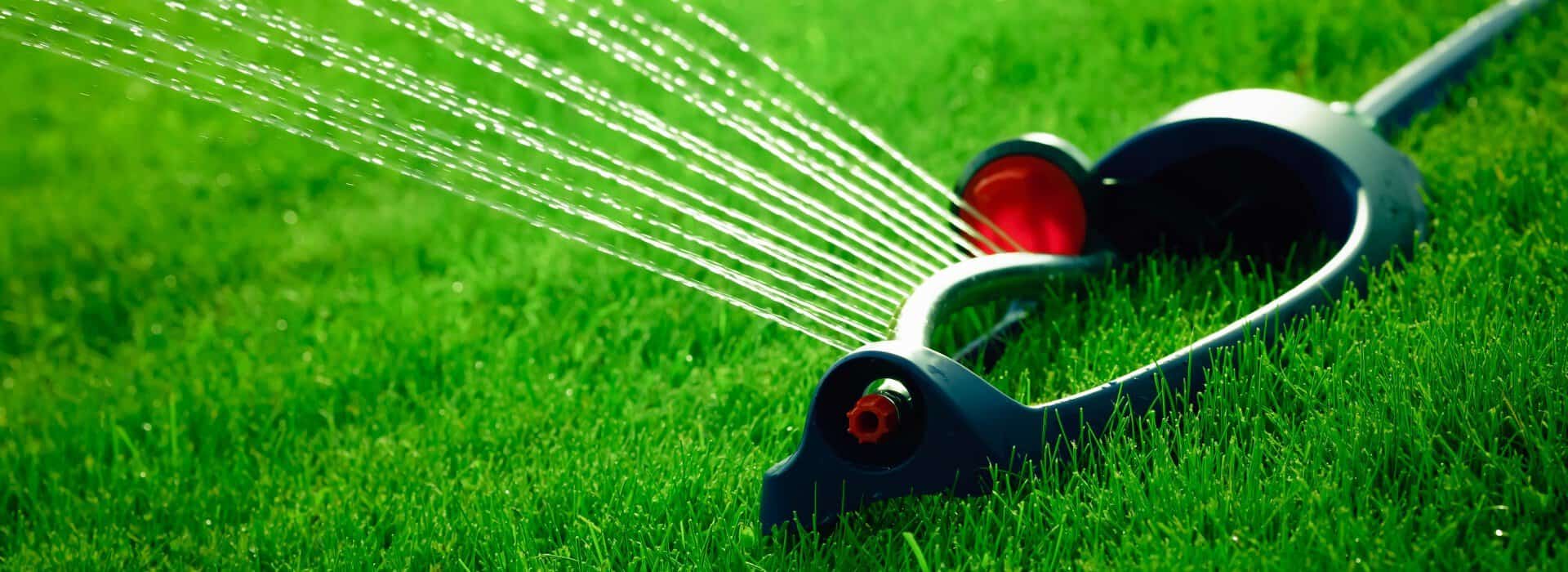Once your lawn has been Hydroseeded, please follow these recommendations to care for it while it is growing. The first few weeks are very important to ensure the seed germinates well.

Hydroseeding After Care
Watering
Do not water Hydroseeded lawns on the first day as this will disturb the seed mulch. For successful germination start watering from the second day and it is very important to keep the freshly seeded ground wet at all times. If the ground is allowed to dry out at all during the seed germination process, most of the tender germinating seedlings will die. The resulting stand of grass will be poor and sparse, and will be a good place for weeds to grow.
When watering, always water with a fine spray to protect the seed and pay particular attention near concrete areas, as they will draw moisture from the seedbed.
If watering with sprinklers we strongly recommend using a tap timer to control the amount of water being applied, as pooling water and water run-off can be detrimental to the grass establishment, resulting in bare areas. We recommend using oscillating sprinklers as these cause the least disturbance to the seed bed. Rotating sprinklers result in seed displacement.
Once the grass is about 40-50mm high watering can be gradually reduced to every 3-7 days in the warmer months. No further watering is required in the cooler months.
Mowing
Different varieties of grass need to be mown at different heights to keep the grass healthy and looking great. Always use a catcher and ensure mower blades are sharp.
Dwarf Rye/Fine Fescue
The first mowing should take place when the grass is 40-50mm high. Trim lightly and gradually lower the blades over a few weeks to an ideal cutting height of 25-30mm. Mow regularly and try not to remove more than a third of the growth at a time. Regular mowing encourages lateral growth resulting in faster establishment of your lawn.
Tall Fescue
Mow Tall Fescue when the grass is 60-70mm high. Mow using the highest setting on your mower and maintain at this height. Mow regularly to encourage faster establishment of your lawn.
It is important to mow Tall Fescue higher than other grasses. If you mow it too short it will die. Established Tall Fescue prefers a longer period between mows to keep it healthy. Ensure mower blades are sharp as blunt blades will damage the end of the leaf and leave an untidy finish.
Fertilising
The mulch applied with your seed contains a starter fertiliser that will remain active during the germination and initial growth phase. After 4-6 weeks and again every three months your lawn will require feeding with a high quality, slow-release fertiliser to keep it in first class condition. Apply high nitrogen fertilisers to encourage growth and colour.
We recommend using a fertiliser spreader to ensure an even application. Be sure to read all instructions carefully and apply fertiliser accordingly.
Weed control
In general, no matter how good the preparation of the site is, weeds will always appear. While some of these weeds will be annual weeds, others will persist and can be treated with a suitable weed killer, but only after good establishment of the grass. Correct weed identification is important in achieving effective control.
While a lawn is in its early growth stage, weeds may be pulled out by hand but if this is done, care must be taken not to disturb the surrounding grass seedlings. Weeds can also be cut out with a sharp knife.
Established lawns can be treated with weed killer anytime during active growth but during periods of drought the weed killer will not be effective and may scorch the lawn.
For on going weed control we recommend you see us for specific advise on chemicals and spraying practices.

